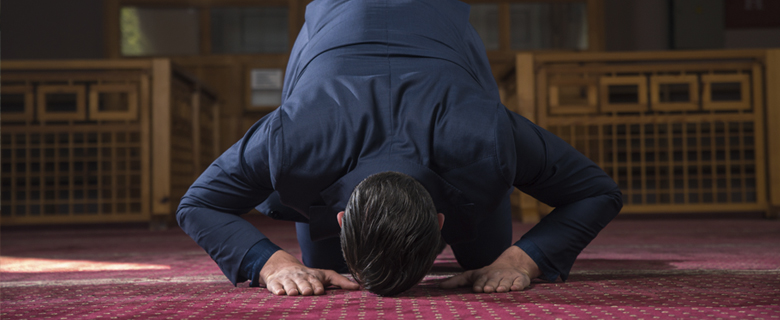
* This blog has been slightly adapted from an original one published as part of the Global Literature in Libraries Initiative: #QATARILITMONTH
A mosque, or masjid, is the building where Muslims perform their five daily prayers. However, many people do not know that mosques are much more than just places for prayer—mosques are at the heart of Muslim societies.
Though Islamic culture urges modesty of architecture and interior furnishing for mosques, they nevertheless are amazing places that demonstrate the “beauty of simplicity.” They are great spots to visit and self-reflect; just be in the moment and focus on your spiritual side as a human being.
Here in Qatar, you will not find a neighborhood without a mosque. Though all mosques have the same central role in the community, you may notice that some mosques are special in their beauty, community engagement and lifelong learning opportunities.

For this blog, I referred to the Arabic book The Mosques of Qatar: their History and Architecture, by Dr. Mahmoud Ramadan, in addition to some newspaper articles and my personal experience.
Through Generations: Old Mosques of Qatar
We can assume that mosques were built in Qatar as early as the 7th century, when Islam came to the region, and although nowhere near that old, here I have chosen two mosques that still stand as remarkable historical buildings in Qatar.
Al Shoyoukh Mosque
Al Shoyoukh Mosque used to be known as the Grand Mosque. It was built in 1913 – 1914 by Sheikh Abdulla bin Jassim, the then ruler of Qatar, alongside Sheikh Abdulla’s palace which is now known as the Amiri Diwan.
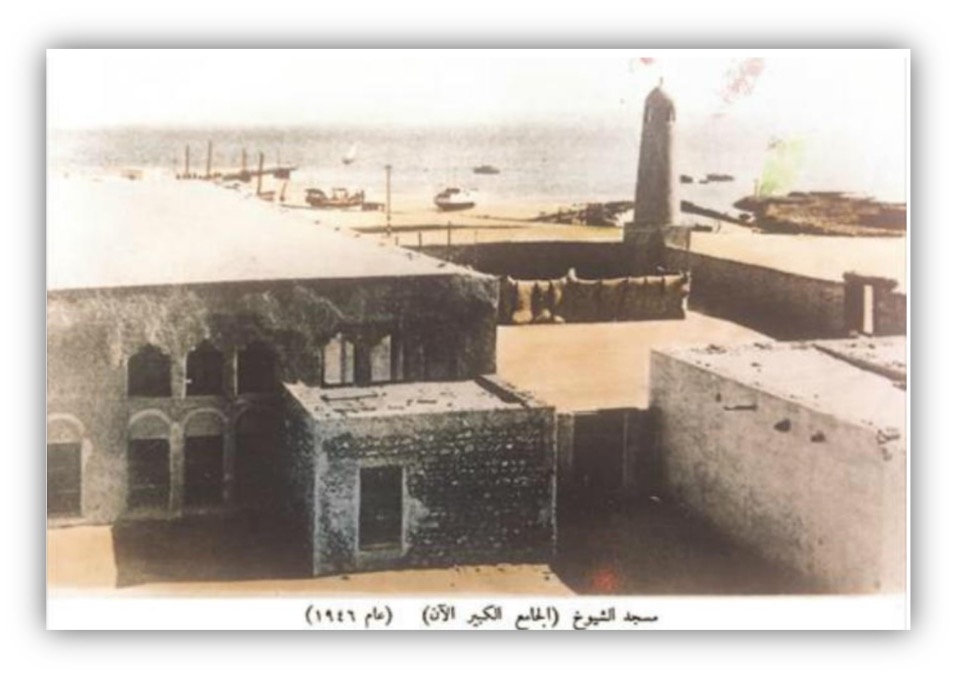
This mosque was originally built from the basic building materials of the time—mud, stone and wood—but it was renovated in 1959. After renovation, it kept its unique architecture but additions were made, including a green octagonal minaret standing high in the sky.
Al Shoyoukh Mosque is easily seen from the area around the Amiri Diwan, Souq Waqif and the Corniche.
Bu Legbaib Mosque (The Mosque of Domes)
This building is remarkable not only for its architectural beauty, but also for being built by the founder of Qatar, Sheikh Jassim bin Mohammed Al Thani, in 1878.
Since that time, the mosque has undergone reconstruction, expansion and development along with the surrounding area. It stands as an archaeological, historical and religious beacon in the heart of Doha, next to Souq Waqif and the Corniche.

Ariel Photo of Bu Legbaib Before Renovation
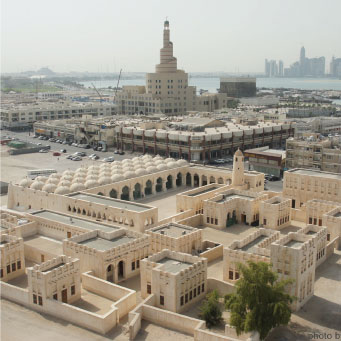
Bu Legbaib Today
Historical observers said that this building reached a level of perfection both in terms of building materials and building skills, as well as having the ability to endure and adapt to nature. They said that even when it rained heavily and their mud houses crumbled and fell, they could not find a single refuge in Doha that would protect them from the rain except this mosque! Bu Legbaib has proudly resisted the harsh factors of nature for more than 100 years without the need for major restorations.
The large number of domes is obvious in the building, but this is not its only attractive characteristic. The beautiful windows of the mosque also worked as a natural ventilation and cooling system, giving the building extra advantages.
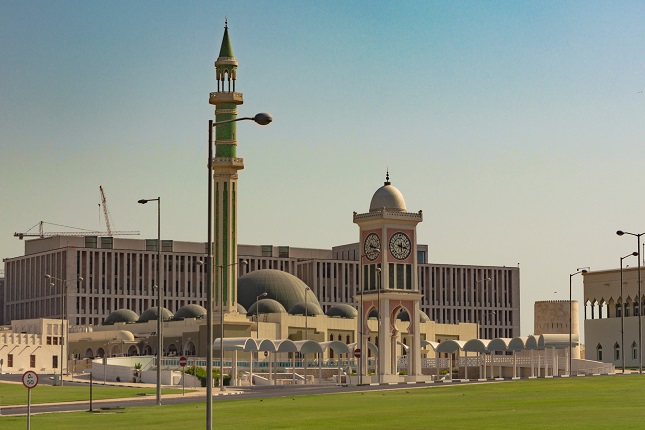 Al Shoyoukh Mosque, today
Al Shoyoukh Mosque, today
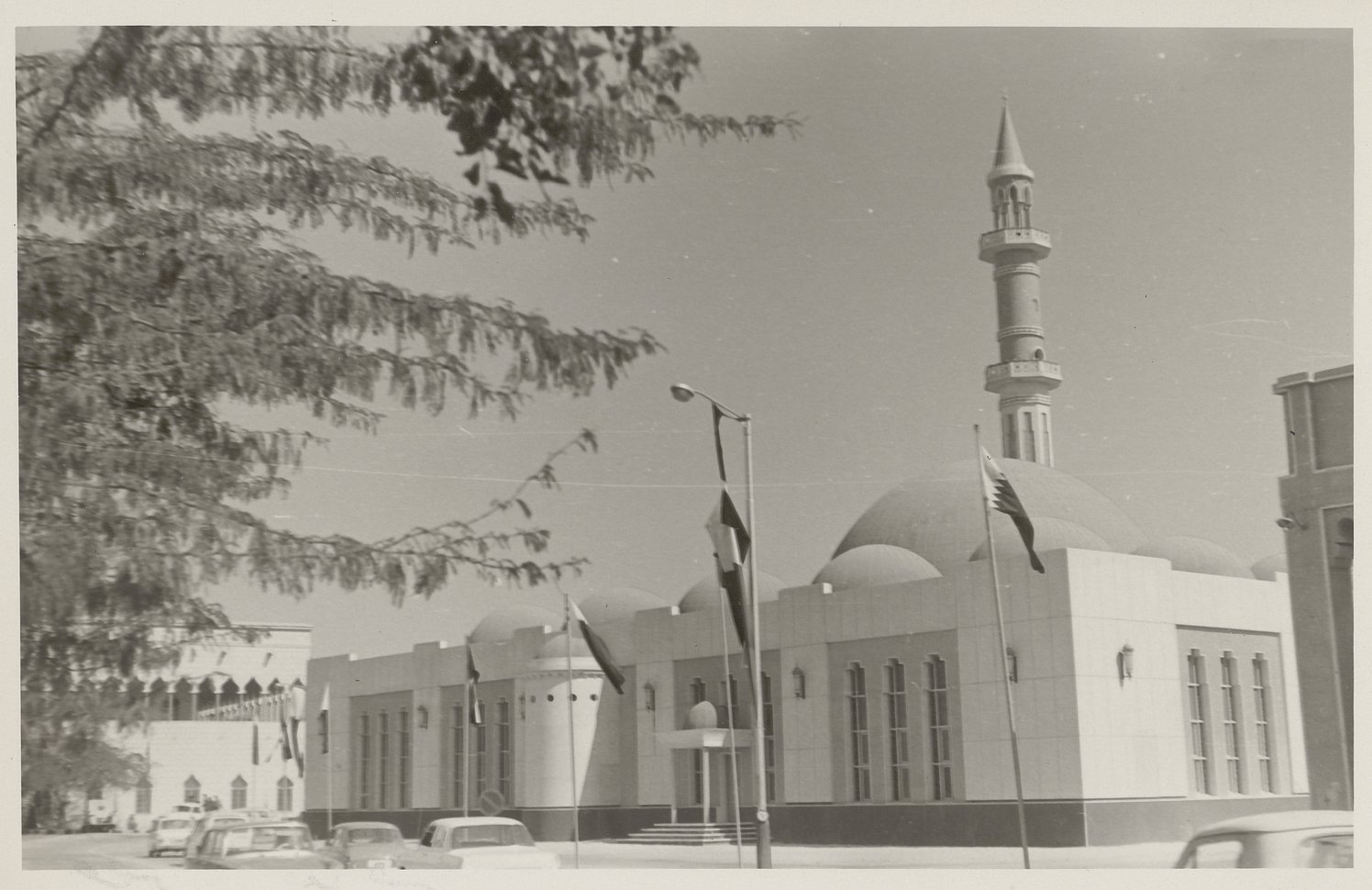 Al Shoyoukh Mosque 1968, QNL's Qatar historical photographic collection
Al Shoyoukh Mosque 1968, QNL's Qatar historical photographic collection
Some people say that this mosque was built to imitate the Prophet’s Mosque in Madinah, due to the similarity in the structure of the prayer hall and the outdoor praying arena.
To see a rich and interesting collection of photos of old Qatari mosques, I recommend searching Qatar National Library’s Digital Repository or clicking here.
Special Mosques in Qatar
All mosques are built initially for the purpose of performing congregational prayers. However, there are many reasons to consider a mosque special—for example, unique architecture, learning opportunities or community engagement. Sometimes you can find all these in one mosque. Here I will try to spotlight the most important mosques in Qatar that encompass these features:
Education City Mosque
Being a librarian at Qatar National Library gives me a wonderful starting view to my workday: the combined beauty of the Library and the Education City Mosque. Some days I am lucky enough to see this view while listening to the beautiful athan (call to prayer) coming from the mosque. We’ll talk more about the athan a little bit later.
This fascinating mosque is located in Education City and housed within the Minaretein building, which means the “Two Minarets”. It is part of Hamad Bin Khalifa University (HBKU) and includes the HBKU Library and the Faculty of Islamic Studies.
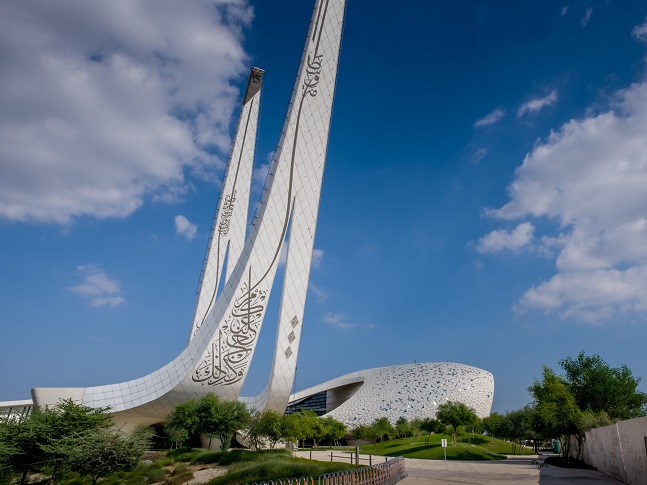
The Education City Mosque from outside
As you can see in the photos, the mosque’s two minarets are tilted to show people outside the building the direction to the Holy Kaaba, which Muslims must face during their prayers. You may also notice the five pillars on which the mosque stands, with a verse from the Holy Qur’an on each, to represent the five pillars of Islam.
The Education City Mosque is a renowned building, having been honored by regional and international architectural organizations. It also has significant personal meaning to me. Every time I visit this mosque, I feel like I want to stay more and use every single second to enjoy the feeling of peace and the sight of its beauty.
The Education City Mosque offers many activities that engage the community and are not just related to Islam. For example, it offers courses in Arabic calligraphy and other lifelong learning opportunities.
I know that there is nothing like visiting a place in person, but this video may help you imagine the experience:
For more interesting information and photos about the Education City Mosque, please check the following links:
Abdullah Bin Zaid Al Mahmoud Cultural Center (Fanar)
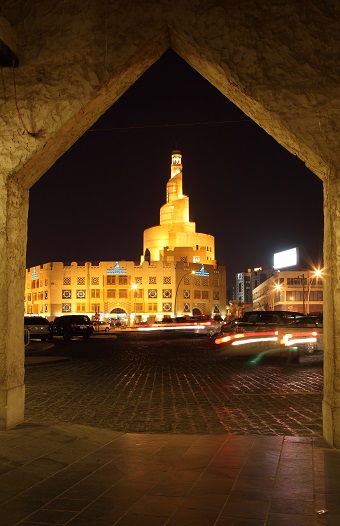 The Abdulla Bin Zaid Al Mahmoud Islamic Cultural Center is also known as the Fanar Center or Qatar Islamic Culture Center.
The Abdulla Bin Zaid Al Mahmoud Islamic Cultural Center is also known as the Fanar Center or Qatar Islamic Culture Center.
This landmark is a cultural organization in Doha, located close to the Corniche and easily recognized by its spiral minaret.
As a mosque, it is considered an important center for Islamic heritage and Arabic language, hosting a library, an exhibition room and lecture halls all in one building.
This center publishes and distributes easy-to-read booklets in many different languages to help readers understand Islamic culture. It also provides Arabic language classes and courses for new Muslims.
The mosque was named in remembrance of the Qatari Islamic scholar and founder of the Qatari judicial system, Sheikh Abdulla Bin Zaid Al Mahmoud.
This was the largest mosque in Qatar until the next mosque on our journey, the State Grand Mosque, was built in 2011.
The State Grand Mosque (Mohammad ibn Abdul Wahab Mosque)
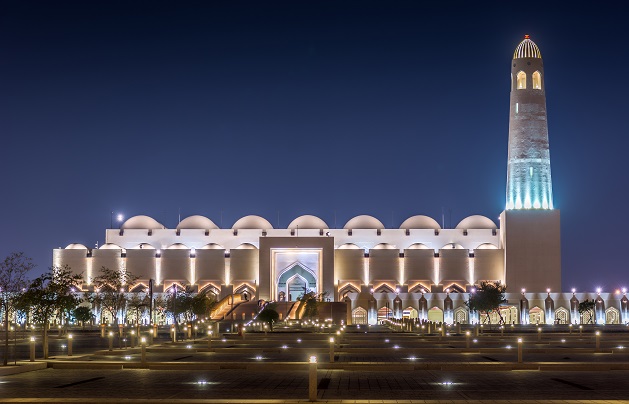
Imam Mohammad ibn Abdul Wahab Mosque
Covering more than 175,000 square meters and with a capacity of 30,000, the State Grand Mosque is the largest mosque in Qatar. It officially opened in 2011 and was also given the name “Imam Mohammad ibn Abdul Wahab Mosque”. It is now well-known by both names.
If you visit this mosque, you will enjoy its fascinating traditional Arabian architectural style. It has a single minaret and a total of 95 domes of different sizes. The architectural concept is very similar to the Bu Legbaib Mosque, but the State Grand Mosque is far bigger.
This large area holds male and female prayer halls, a library, a Holy Qur’an memorization area, ablution areas and washrooms, and outdoor prayer space.
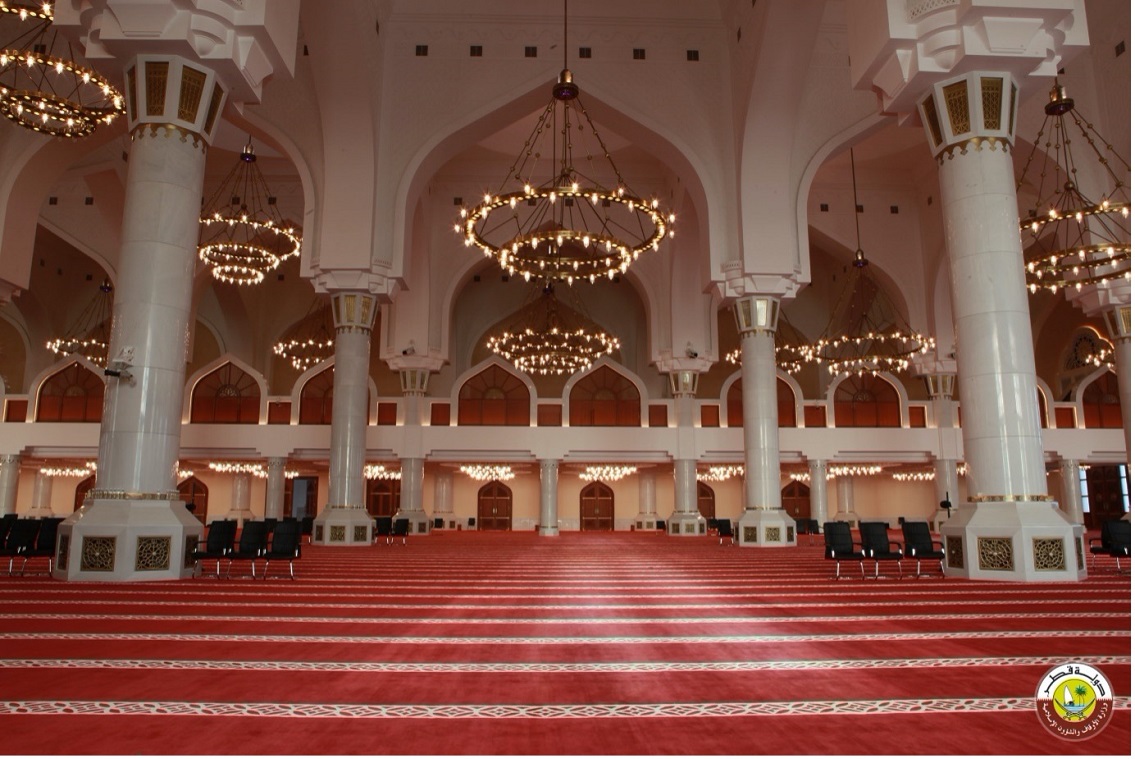
Imam Mohammad ibn Abdul Waab Mosque, interior. Photo from the mosque’s official website, http://www.jameaalemam.com
Here in this mosque, traditional Qatari architectural beauty meets modern technology. The lighting system adds ambience, and the sound system guarantees everyone in and around the building can hear the proceedings. The building also has its own media center and built-in cameras for media coverage.
The building and its spiritual atmosphere, lectures and cultural activities all make this mosque one of Qatar’s most important landmarks. The mosque’s website, which is in Arabic, can be found here, www.jameaalemam.com.
The mosque during Ramadan
Mosques during Ramadan take on an even greater significance than the rest of the year and are central to a Muslim’s life during the ‘Month of Prayers’.
Their role is of particular importance for Taraweeh (meaning restful or relaxed) prayers, which are only performed during the Holy Month. Although not compulsory during Ramadan, they are performed voluntarily to increase one’s connection with Allah and receive his blessings.
As Taraweeh prayers are performed at night and can take over an hour, many mosques offer communal prayer sessions, bringing Muslims of all walks of life together to connect with God and creating a sense of community and belonging in shared worship.
General Information
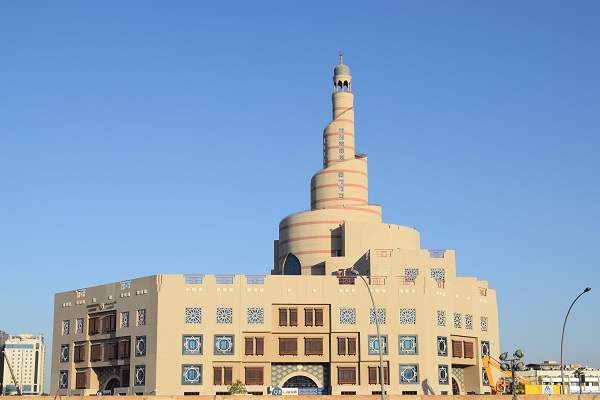
Who is welcome in mosques?
Mosques accept visitors and tourists from all over the world. Unlike what many people think, you do not have to be a Muslim to enter a mosque. Everyone is welcome! Non-Muslim visitors will not be banned from entering mosques, although they may not find things to do in small mosques while Muslims pray. However, it is different at the big mosques, which welcome visitors and tourists individually or in groups to teach them about Islamic culture.
Still, there are few guidelines everyone should follow when entering a mosque:
- Dress code: Clean and modest attire. Ladies are urged to cover their heads and wear a long dress when entering a mosque.
- Noise: We should speak quietly inside a mosque.
That’s it! So easy, right?
What are the functions of the minaret?
Most mosques are built with at least one minaret. These are not only for the sake of architectural style, but also to help people find the nearest mosque among other buildings in their neighborhood. In addition, higher minarets help the sound of the athan reach farther.
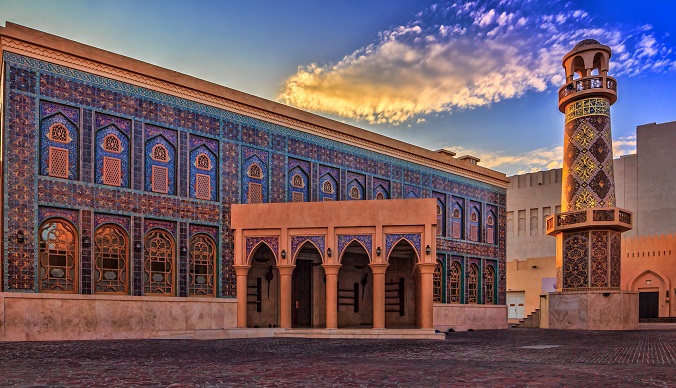
Katara Mosque
What is the athan?
If you have never been to a Muslim country, you may have not heard the athan before. However, if you live in Qatar, then you hear the athan five times a day. Besides the live athan from mosques, you also may hear a recorded athan in shopping malls, public parks, libraries and even on your friend’s mobile phone!
Athan is the declaration of a prayer time, also known as the call to prayer. Athan timings change slightly from day to day depending on the length of the day, but the five general prayer times are at dawn, noon, afternoon, sunset and night. Because the athan is performed by an individual, you may notice the difference in voices among athans from different mosques.
In the following video, you will hear an athan from Qatar TV calling the noon prayer:
As an example of differences in voice and performance, the following video is the athan calling the dawn prayer, with English subtitles:
These are only two examples of athan voices. For me, the recorded athan at Qatar National Library remains one of my preferred athan voices. Come visit us and hear it!
Personally, I consider the athan a message to take a break from our busy lives and focus on the spiritual side of prayers, and when I return to work or home I’m in a fresh mood to continue life’s responsibilities.
Mosques During the Pandemic
In March 2020, many places in Qatar had to be locked down due to COVID-19, including mosques. This was sad for many Muslims, who were used to performing their prayers five times daily in mosques. Even the athan changed to call people to “pray at home” instead of calling them to the mosque. This change was in line with the Prophet Muhammed’s (Peace and Blessings be Upon Him) advice for cases when people should pray at home instead of going to mosques due to unsafe conditions.
For me, it was the first time in my 36 years that I heard an athan telling us to stay home, and I cannot explain how sad this experience made me. After three months of closure, this sadness was followed by great happiness of having these “doors of mercy and peace” open again! Mosques are open!
In this video, Mosa Abdul Alim, a basketball player at Al Wakra Sports Club explains his happiness and excitement after the mosques opened. He simply had to hear the iqama coming from the mosque to realize that they were back open. Enjoy watching!
To conclude, I would love to say that mosques, whether they are architecturally ornate or simple, are places of beauty and peace on our planet. Their impact goes beyond how we see them to how they make us feel inside, and the mosques of Qatar are at the heart of our collective community.
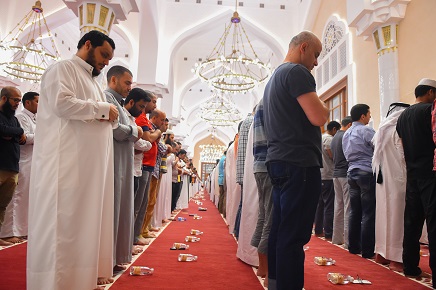 Group prayer before COVID-19
Group prayer before COVID-19
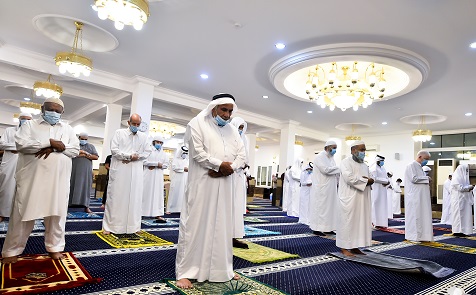 Group prayer during COVID-19
Group prayer during COVID-19

Add new comment